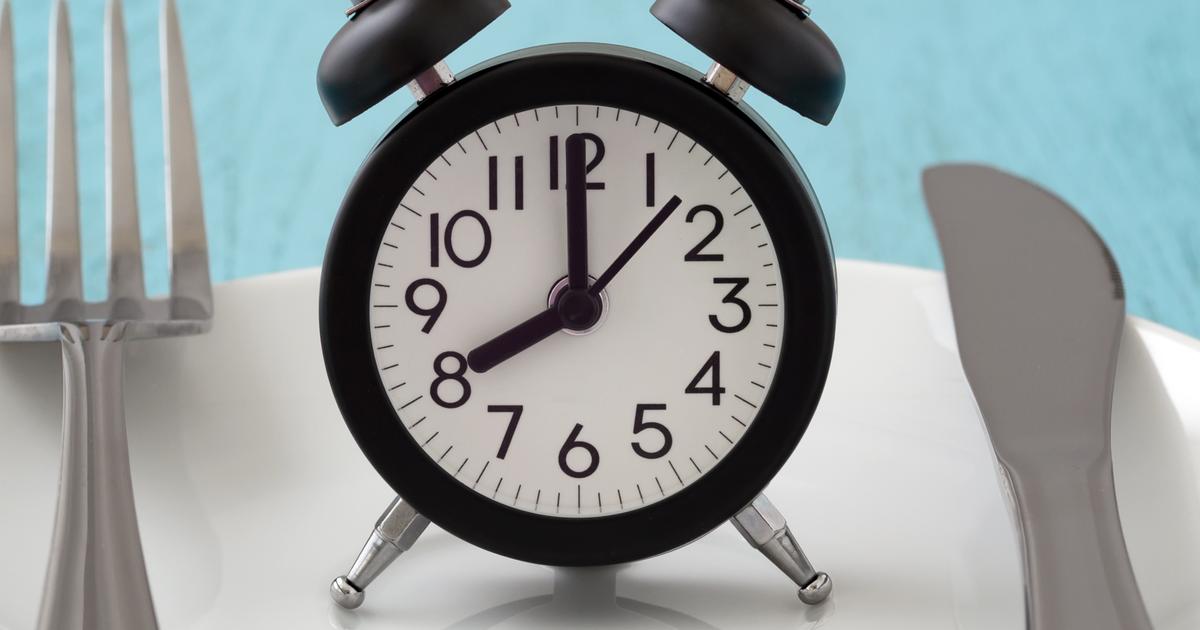Popular Fad Diets, Ranked From Best to Worst
Although the concept of beauty is changing and being super skinny is not a longer synonym for the ideal body, fad diets are constantly appearing as a way to revolutionize how people fight to lose weight. Celebrities are raving about the method which works for them, like Kim Kardashian's post-pregnancy Atkins regimen, and the people at SoulCycle promoting the Whole 30. On a first glance, it can be hard to understand the differences between each fad diet and which one is the right one of what kind of person. These can be a lifestyle change, but if not done properly, someone might end up spending a substantial amount of money for the thing. To make things easier, here is a list of some of these diets that may help those who are interesting about where to start.
Dietary Approaches to Stop Hypertension (DASH)

Ranked as the Best Overall by the U.S. News for seven years in a row, this diet was originally developed to lower high blood pressure, but as it turns out, it also helps with weight loss. Four months of DASH combined with exercise can help an adult to lose up to 19 pounds. It details how many servings of each food group a person should eat; a 2,000 calorie diet, with recommendations to consume six to eight daily servings of grains, four to five of fruits and vegetables, two to three of reduced fat dairy, and six or fewer of lean protein. Weekly, the client must spread out four to five servings of seeds and legumes, two to three of fats and oils and five of sweets. It is ideal for those who find it hard to give up on certain kinds of food as it allows you to eat pretty much anything with a reduction of fats, sweets, and oils. Plus, there are many recipes to choose from.
Weight Watchers

This diet was made popular by Oprah and won the U.S. News' best diet for weight loss. It works by calculating SmartPoints numbers based on gender, weight, height, and age. Every food item is given a point value based on nutrition; most fruits and vegetables are zero points, which helps to keep a person from the starvation feeling that comes at the start of a new diet. Weight Watchers also have an app and website where people can checkpoint values, and they also offer local meetings for support. There is evidence that users are more likely to lose weight the more they engage with the brand, losing an average of six pounds after four weeks.
Health Management Resources (HMR) Program

For those who want to hit a goal weight quickly, the HMR is the highest regarded fad diet. They offer prepackaged meal replacements, which consists of shakes, entrees and nutrition bars, and eat five servings of fruits and vegetables daily. When the person has reached their goal, they transition out some of the HMR food replacing them with lean proteins. It must be noted that this diet must be combined with daily exercise working up to a goal of burning 2,000 calories every week, but for those who are not accustomed to exercising, they can start gradually. It is convenient as the food gets delivered straight to the person's house, but it does not come cheap. The starter kit costs $265 and the fortnight top-ups are $180.
Mediterranean Diet

It is hard to imagine the rich and delicious food from Mediterranean countries being associated with weight loss. At the same time, they are also linked with heart health and to diabetes and cancer prevention. As the Harvard School of Public Health's food pyramid suggests, following this diet includes eating seafood weekly, bypass red wine and red meat, and put a limit to poultry and dairy. It is recommended to include foods such as fruits and vegetables, beans, whole grains, and plenty of olive oil. It is important to note that the Mediterranean diet is more of a pattern than a structured diet, so it is recommended to talk to a doctor if the goal is to lose weight, this way they can sort out a calorie target and fitness plan. A study following overweight diabetics discovered that those following this diet lost about 16 pounds over a year.
Flexitarian Diet

The most difficult part of following a diet is the restrictions that come with it. For those who struggle with cuts, the flexitarian is the ideal option. This regiment was created by a registered dietitian called Dawn Jackson Blatner, who combined the terms "flexible" and "vegetarian" to create a diet which is mostly vegetarian but allows a bit of meat to slip through now and then. The diet consists of adding give food groups (fruits and vegetables, whole grains, dairy, sugar and spice, and meat substitutes like tofu and lentils) to a person's diet, with two daily snacks. Vegetarians tend to eat fewer calories and still feel full, so this diet combined with exercise will likely lead to weight loss. Studies show that vegetarians usually weight about fifteen percent less than carnivores.
Mayo Clinic Diet

There are two phases of this diet; an initial jump-start to weight loss followed by a healthy lifestyle for long-term achievement. The first phase, known as "Lose It" lasts two weeks. It consists of thirty minutes work out every day, cut all sugar (apart from fruits), and bans eating in front of the TV. The person must eat plenty of healthy fats and whole grains, starting their day with a substantial breakfast. Cutting processed food is not a requirement, but it is a bonus. During this phase, the goal is to lose between six to ten pounds. The second phase, "Live It" is more relaxed; it gives a calorie count to follow to either lose more weight or maintain weight loss during the first phase. This is a popular although challenging diet as it is quite restrictive: it makes it difficult to eat out and it is recommended to cut off the alcohol intake. This diet was developed by highly qualified professionals at the Mayo Clinic medical center.
Volumetrics Diet

This diet is all about the numbers. It is guided by Barbara Rolls' book, The Original Volumetrics Diet, which teaches people to eat lower-density foods, which are the ones with fewer calories per gram. It means that those who follow this diet will eat fewer calories yet still feel full due to the density of the products consumed. Volumetrics contains four food groups, which are separated by density in Categories one to four. Category One contains the lowest-density foods, like watery fruits and vegetables and some soups. It goes up to the fourth category, which includes carb-heavy, fatty foods like oils and cookies. Those who follow the Volumetrics Diet should binge on the Category One and avoid Category Four, but focus on the ones in between as it is where items like grains, fruits, and vegetables are found. Foods high in water are encouraged since water adds density without the calories. One study of obese women on a low-energy-dense diet shows that they lost an average of 11 pounds over a year, so it proves that it is an effective diet for weight loss.
MIND Diet

The MIND diet is a mix between the Mediterranean and DASH diets. Its actual name is Mediterranean-DASH Intervention for Neurodegenerative Delay, and the focus of this diet is to lower the risk of Alzheimer as the partakers eat from ten brain-healthy food groups and avoid unhealthy and processed food. The guideline is to eat three servings of whole grains, salad, vegetables, and a glass of wine on a daily basis. For protein, it includes chicken, fish, and nuts and with berries as a snack. The MIND diet is directed to brain-health more than it is to weight loss, but by cutting processed food, desserts, dairy, and fry food, it automatically reduces the high-calorie items while reducing the chances of Alzheimer.
Paleo Diet

This diet, although popular, is not very effective when it comes to weight loss. It is also not very convenient and hard to maintain in the long-term. Its rule is simple: any food which would not be available in the Paleolithic era must be cut out, which means that processed foods, refined sugar, dairy, legumes, and grains are not allowed. What is left is meats, fish, poultry, fruits, and vegetables. It is difficult to follow this diet as a lifestyle as it cuts off entire food groups, which is also deemed unhealthy by most doctors. And although it is not easy to lose weight, it is also not impossible, as the calories consumed can also be burned. The high point is that for those who like meat, there are great varieties of recipes to choose from.
Ketogenic Diet

Although this diet did not make it to the U.S. News' best 28 diets of the year, it is one of the top searched diets of 2016. Perhaps it is the fact that it is an extremely low-carb diet, high-fat diet that attracts people. This method was originally developed to treat epilepsy, as it also limits proteins. This fad diet is considered to be a "sustainable form of fasting," as told by Harvard Medical School professor, Gary Yellen. The human body normally relies on carbs to generate energy, so this diet will force it to burn healthy fats instead. An example of a ketogenic menu consists of eggs with olive oil and avocado for breakfast, leafy greens, salmon, nuts and olive oil for lunch, followed by steak, greens and more oil for dinner. Because this is a diet that in a way starves the body, it is better to seek a professional's assistance before beginning.
Whole30 Diet

The Whole30 is perhaps the most popular fad diet, yet fame does not necessarily mean good results. It scored the last place on U.S. News' report for the second year in a row. The Whole30 diet may attract people because it is to be a lifestyle transformation that claims to even help with medical conditions. There are strict limitations when it comes to sugar, alcohol, grains, legumes, and dairy for thirty days. For those who do not cook their meals, it may be a hard diet to follow. It also does not allow any snacks, not even healthy ones, as the idea is to change the way that people think about food. Many see this diet as a thirty days challenge and feel accomplished by the time they finish. Although there are no proper studies on the Whole30, a survey by the company claims that 96 percent of dieters lost between 6 and 15 pounds. The high side is that there is a sample grocery list for this plan and a variety of online groups, so those who decide to "join the challenge" will not feel alone.
